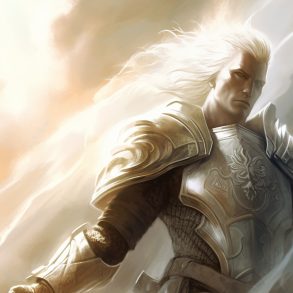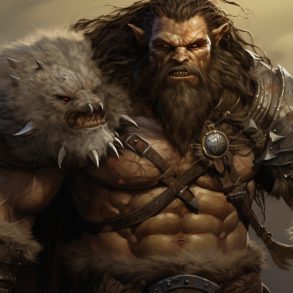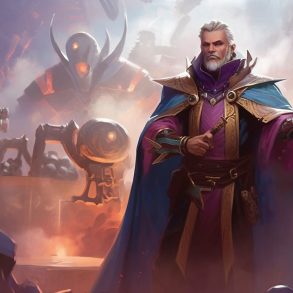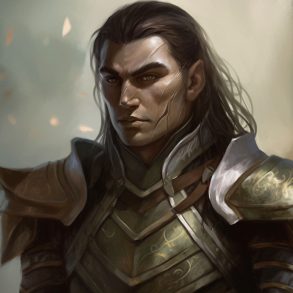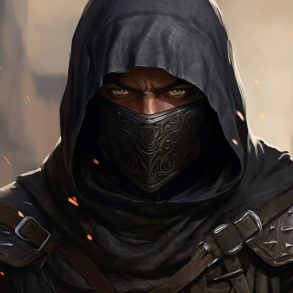So, you’re interested in playing a Monk but you’re not really sure how to go about it, what tradition to choose, or perhaps you’re struggling to even pick out a race! Don’t worry, you’re in the right place; in this guide, I’ll take you through the Monk class and all of the supporting options you can choose to make sure you have the character you want. Whilst reading through this guide, you may find our articles on DnD terms and list of DnD books (and their common abbreviations) helpful.
This Monk DnD 5E guide will evaluate each option for the Monk on a scale of 1-5– this is a rating of the abilities’ potency and overall usefulness, primarily focusing on combat. That said, I will still evaluate everything. This can aid you to weigh any choices you might be considering at a glance, helping you know what to expect and make changes accordingly if desired. The rating scheme is:
1 – Usually a bad choice, to be avoided
2 – Below average, this can apply to powerful but very niche abilities
3 – Average to Good, you won’t go wrong with it
4 – Very good
5 – Amazing, a must-have if there is such a thing
Be sure to check our other DnD 5E class guides: Artificer 5E guide, Barbarian 5E guide, Fighter 5E guide, Paladin 5E guide, Ranger 5E guide, Rogue 5E guide, Sorcerer 5E guide, and Warlock 5E guide.
Changelog
Version 1.5
Version 1.4
- Added Spelljammer races
Version 1.3
- Added Mordenkainen Presents: Monsters of the Multiverse races
Version 1.2
- Added Owlin race and Strixhaven feats
Version 1.1
- Added subclass: Ascendant Dragon
- Added races: Dhampir, Hexblood, Reborn, Harengon, Fairy, and FToD Dragonborn
- Added feats: FToD Gift of… feats
Version 1.0
- Initial version
Disclaimer
This rating system exists to best help you understand the effectiveness of all the options available to the class for you to build and enjoy your character. Remember though, your fun comes first; it’s actually very difficult to build a character that is entirely bad in DnD 5E, so if you have a concept that doesn’t rate highly, you might still have fun playing it. This is a guide, not a contract written by Asmodeus. Let it advise you and not force you away from your own ideas.
It’s recommended to have your book/PDF/DnD Beyond page open to reference and follow along with the guide.
Table of Contents
Monk 5E Class Abilities Guide
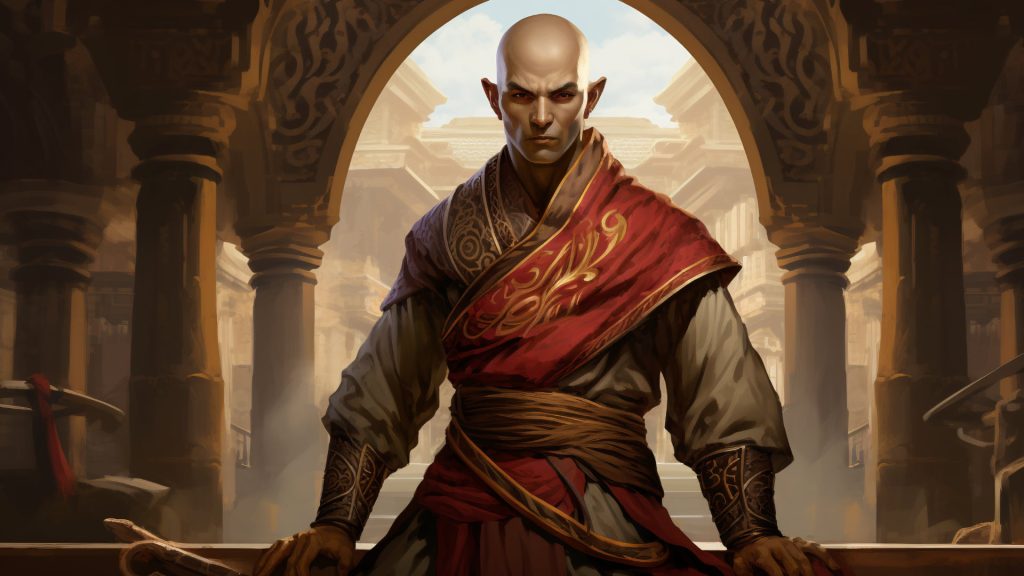
Hit Dice 3 – A d8 is pretty middle of the road, but on a martial it feels a little low.
Monk 5E Proficiencies Guide
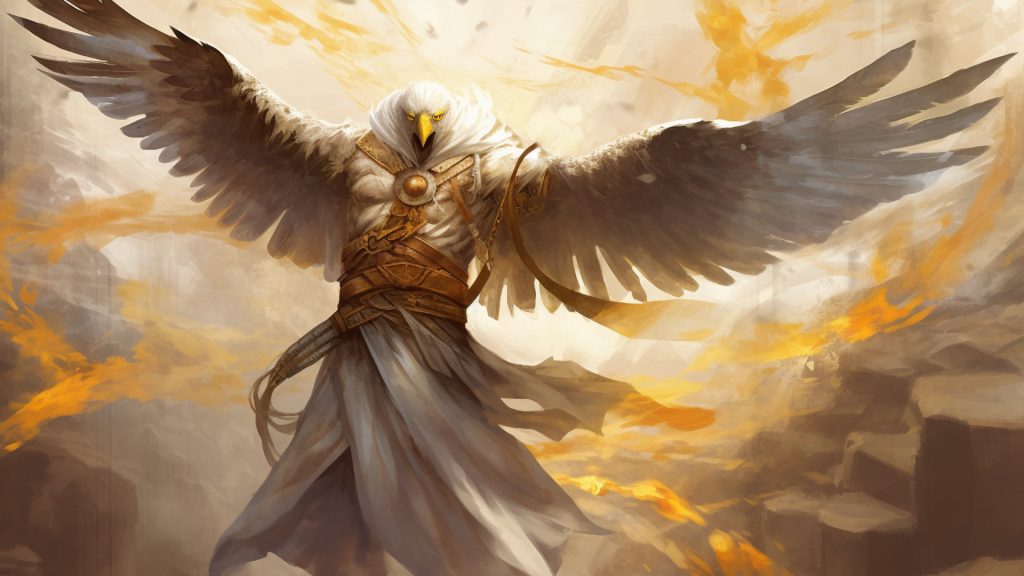
Armor 3 – You don’t get any proficiencies, but wearing armor locks you out of abilities anyway.
Weapons 3 – In practice, all the proficiencies a Monk needs, but if you use TCoE optional rules, you will probably want to pick up additional weapons from elsewhere, like your race.
Tools 3 – Getting a tool choice at all is nice for roleplaying; grabbing Herbalism Kit can allow you to make Healing Potions cheaply.
Saving Throws 4 – Dex is an extremely common saving throw and is usually painful to fail. Str is actually a good weaker save to have, due to all of the prone/pull/push effects monsters can have.
Skills 3 – Nothing special here with only two choices, Stealth and Athletics are standouts.
Unarmored Defense 4 – This is pretty good overall, though you can’t use a shield and it’s MAD. The Wis you need is tied to some abilities and always a good score to bump regardless. Even with point buy, you can start with an AC of 16, and topping out at 20 is respectable, though not exactly impressive.
Martial Arts 5 – Your bread and butter. This allows you to use Dex instead of Str for your unarmed attacks and Monk weapons; Dex is arguably the most powerful stat in 5E, so this is a huge boon. The unarmed strike damage is better than standard 1 point and will scale decently as you level.
Ki 4 – It fuels most of what you do; the pool feels a little small in the early levels but that resolves itself around 5th level. You need to be aware of managing your Ki if your party is unable to short rest the recommended amount (1-2 per long rest, depending on the number of encounters).
Flurry of Blows 5 – A cheap way to get an additional attack, which will often have other abilities triggered by taking this bonus action.
Patient Defense 4 – This isn’t commonly used, in my experience, but when things are looking rough or your Monk wants to tank, it’s a fantastic and cheap ability– disadvantage is a powerful defense.
Step of the Wind 3 – Your Get Out of Dodge card as well as the finishing touch to your Flash costume. It likely won’t be used much, but a solid ability.
Unarmored Movement 3 – I’ve rated this average because how good it is really depends on your DM: if you play on maps with plenty of space, then you can leverage this nicely; if combat usually starts and stays in 30ft, then this is much more lackluster. Being able to parkour in later levels is pretty cool though.
Deflect Missiles 3 – A little niche, but a very nice defense against missile-based ranged attacks. Unless an enemy is likely to be killed by it, I don’t recommend spending the Ki to return fire.
Slow Fall 3 – Again niche, but nice in that it comes alongside an ASI and allows you to basically ignore fall damage for the most part. Pairs nicely with the 9th level improvement for Unarmored Movement.
Extra Attack 5 – The standard damage increase for most martials at this level, however, the Monk’s comes with an increase in the Martial Arts die size for a little extra oomph.
Stunning Strike 5 – This is an amazing ability: it’s cheap and stunning an enemy can entirely shift the direction of a combat. It’s a great way to burn through uses of Legendary Resistances too, just don’t neglect your Wisdom modifier!
Ki-Empowered Strikes 3 – This is a pretty important ability, but it’s passive and just really serves to allow the Monk to keep doing Monk things at higher levels.
Evasion 5 – Great on a Monk or Rogue, lets you laugh in the face of [some] danger, traps, and a number of dragon’s breath weapons.
Stillness of Mind 4 – Being charmed or frightened can be very debilitating in combat (or worse, if you’re forced to fight your friends), so being able to auto end it is very nice. This rating would be lower if it was the only ability granted at this level, but when paired with Evasion, it makes a great defensive package.
Purity of Body 3 – This is rated average just because of how situational it is, but if your DM likes to use poison-heavy enemies like Drow and Purple Worms, then this rating goes to a 5.
Tongue of the Sun and Moon 3 – A nice ribbon ability that’s always on; I’d have ideally liked to see this a few levels earlier, though.
Diamond Soul 5 – Proficiency in all saving throws with the option to burn a ki to reroll a failure, is an amazing ability. Even your dump stats would have decent modifiers at the level this comes into play.
Timeless Body 2 – A ribbon. The no food or water thing would have been nice at earlier levels, but at 15th you shouldn’t be concerned with the basics of survival as a party anyway (this is also redundant if you chose to play a Warforged Monk).
Empty Body 5 – A fantastic ability: 4 Ki basically gets you Greater Invisibility (with none of the downsides), as well as resistance to everything but Force. The utility of Astral Projection is just the juicy cherry on top.
Perfect Self 2 – Whilst always having some Ki available to do Monk things with is a very 20th level Monk kind of ability, the reality is that unless your group doesn’t short rest but still fights a lot, you likely won’t need this. Even if you do need it, 4 Ki is very little at this level, not worth sticking to 20 levels for.
Monk 5E Optional Class Features (TCoE) Guide
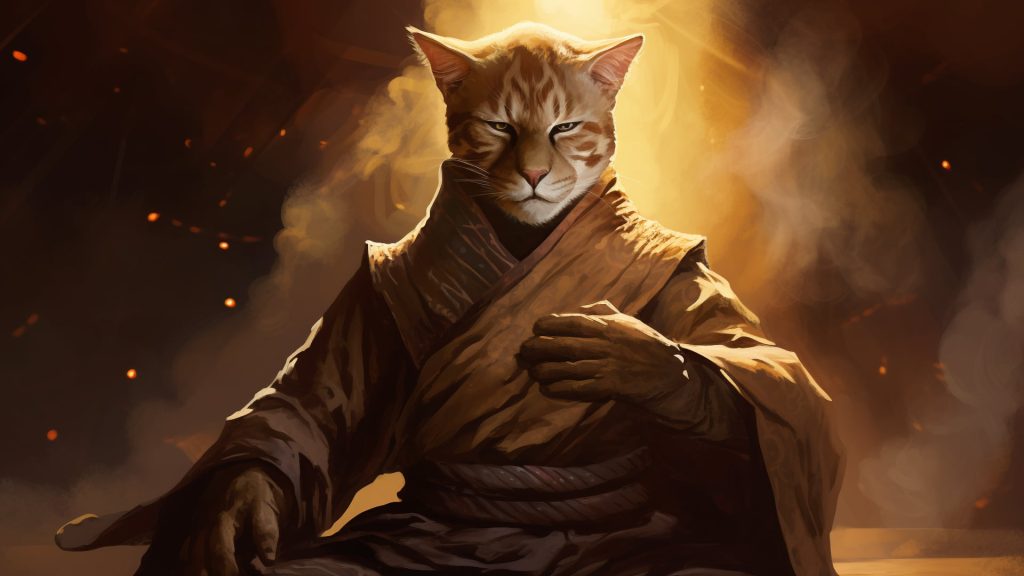
All of the optional features for the Monk in Tasha’s are additive, so you gain them without losing anything you get as a standard Monk.
Dedicated Weapon 4 – This is a straight upgrade to normal Monk weapons, opening up options like using a longsword for a D10, or taking a shortbow for ranged attacks. The whip is a great choice for this since your Martial Arts Die will replace its meager d4 and you gain reach in return. The only downside is needing to get proficiency outside the class, but this is very easy to do between races and multiclass dips.
Ki-Fueled Attack (4/5) – This is a nice upgrade to the standard Martial Arts bonus attack in early levels (and even later ones if you get a magic weapon), this ability is higher rated on classes like the Shadow Monk and Four Elements Monk, as it allows attacks alongside their casting. This ability can be triggered by using abilities like Stunning Strike and Focused Aim when attacking as well.
Quickened Healing 2 – This is about efficiency and worse case scenarios, the Ki to healing ratio is pretty terrible and that’s okay. The main purpose of this ability is to spend any leftover Ki before a short rest, saving you some hit dice. The option to heal yourself a little between fights is nice if there’s no other healing in the party at that time.
Focused Aim 5 – Getting a +2 to hit per Ki spent, without even needing a reaction is an amazing ability, made even better by allowing you to qualify for Ki-Fueled Attack.
Monk 5E Stats Guide

It’s important to go through how pertinent each stat is for a Monk before we get into the nitty-gritty of the subclasses. This part of the guide will rate the stats in the game based on how good they are for a Monk, you may decide to use a build that relies on a stat rated lowly here, but that doesn’t mean your concept can’t work!
Strength 2 – There’s no need for Str on a Monk, so you can safely dump this stat unless you want to incorporate grappling heavily.
Dexterity 5 – Besides being a powerful stat all around, Dex is the key stat for the majority of Monks. I’d recommend maxing Dex before Wis, in general.
Constitution 3 – Everyone needs some Con, especially a martial. Unfortunately, Monks can’t afford a high Con (unless you roll highly for stats). I’d advise aiming for a +2 here, try to not go lower than a +1.
Intelligence 1 – An uncommon save and no real use on a Monk unless you want to be good at a particular skill or make an unusual multiclass. Or, showing up the know-it-all wizard in your party, I suppose.
Wisdom 5 – Key for your AC, save DCs, some subclass abilities, and, of course, the normal Perception and Wis saves (usually very punishing saves to fail).
Charisma 2 – There’s no real need for Cha on a Monk for combat; I’ve rated this higher than Int because there’s no reason you can’t have good social skills if you want to. Personally, I try to not go lower than a 10 with non-Cha-based characters.
Monastic 5E Traditions (Subclasses) Guide
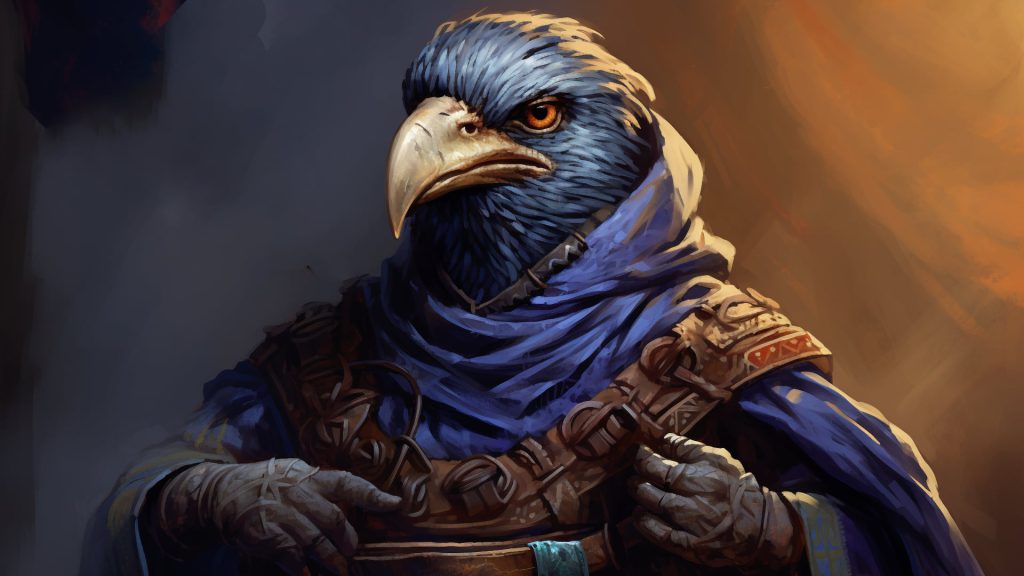
What subclass you choose can greatly change how you Monk, so it’s important you consider how this affects your choices (stat placement, ASIs, Ki spending, etc.). For each subclass, I’ll also note how heavily they use Ki. Going in order of publication:
Open Hand (Low Ki)
A Monk that focuses on improving the unarmed strikes of Flurry of Blows with control effects. A great subclass for your standard martial artist concept. Despite the name, you’re best off using a weapon to maximize your damage on your main attacks for most of the game. I would try and leave yourself at least 1 Ki per fight so you can flurry in every combat, as the levels go up you’ll be able to afford to spam Stunning Strike attempts.
Open Hand Technique 5 – No actual Ki cost, this just gives more value to your Flurry, trying to knock prone for advantage and denying reactions so you can leverage your higher move speed to escape, are great tactics.
Wholeness of Body 3 – A good self-heal ability, mostly useful for keeping yourself topped up between fights but can save you from going down if needed. Useful but overall lackluster.
Tranquility 2 – This is only good for protecting you from Surprise attacks and ending up low in initiative, since attacking anyone will end Sanctuary and the subclass doesn’t give you anything else to do.
Quivering Palm 5 – This is an amazing ability with an incredibly long duration once set up. Constitution is usually a good save for creatures, especially at this level, but 3 Ki and an action for 10d10 damage is fantastic.
Shadow (Potentially High Ki)
The subclass of choice for a ninja or Nightcrawler style build, your Ki use will depend on how heavily you use your spells, which itself can depend on the type of enemies your DM uses.
Shadow Arts 4 – A great selection of spells for party-wide stealth. I would suggest casting conservatively unless you’re fighting enemy casters, otherwise, you will run out of Ki quickly. Darkness is a great way to set up your own Shadow Step– you can even cast it above the battlefield and drop down out of it.
Shadow Step 3 – This is a great ability but potentially very situational, as long as you can leverage dim light or Darkness regularly, then this rating increases to a 4. Excellent in combat for getting into melee with advantage or getting out of there if things are going badly, great for scouting out of combat, and feeling cool all of the time.
Cloak of Shadows 2 – A good scouting ability, but can be defeated by a simple torch unless you’re in magical darkness, which, unfortunately, the subclass doesn’t give you a way to see through.
Opportunist 3 – This isn’t a bad ability, especially since it gets you another chance to stun and costs you no Ki, but in my opinion, it isn’t a particularly good subclass capstone.
Four Elements (Very High Ki)
If you’re an Avatar: The Last Air Bender fan, then this is for you, giving you access to elemental abilities and spells. If you aren’t a fan, well, maybe you should think about your life choices. This subclass suffers from high Ki dependency, so you’ll have to be conservative with casting in earlier levels. If your DM allows TCoE optional rules, Ki Fueled Attack is a significant buff for this subclass, allowing you to attack as a bonus after casting, even with a bow (if you can get proficiency for it to be a Dedicated Weapon).
As this subclass doesn’t have separate abilities like other subclasses, instead I will go through the various Elemental Disciplines:
Breath of the Winter 2 – If you need a huge AOE, this isn’t a terrible option, especially if your party is lacking other options. If you already picked up Flames of the Phoenix, then you may be better off with a wall giving option for some control and longevity out of this huge amount of Ki.
Clench of the North Wind 3 – Hold Person is the kind of spell that can completely change the direction of a fight, nothing says ‘we win’ like a Flurry of crits, right? This doesn’t rate higher because it’s quite likely you’ll end up fighting monsters who aren’t viable targets.
Elemental Attunement 4 – You don’t really have a choice in taking this one, but a bunch of no-Ki minor effects lets you actually feel like a master of the elements, rather than a Monk that can just cast some costly spells. Obviously not rated for combat!
Eternal Mountain Defense 2 – If you have a way to skirmish or to reliably attack at range, this is good for casting on someone else. Relying on something concentration-based to be a tank yourself when you don’t have Con save proficiency, is not a good idea.
Fangs of the Fire Snake 4 – The only downside to this discipline is the fire type, otherwise it’s nothing but hot molten gravy. It’s cheap, extends your reach significantly (style points if you’re a Bugbear), and lasts your entire turn– meaning your bonus attacks benefit for no action economy cost!
Fist of Four Thunders 3 – Thunderwave is a good early-level spell that gives you some potential control. This won’t age very well, though, so if you’re looking to go to higher levels keep that in mind and maybe swap it out later on.
Fist of Unbroken Air 2 – I like this discipline, but, unfortunately, Str is not usually a weak stat for monsters and it’s only a single target effect. The damage is pretty decent and save for half damage, so if this catches your attention, don’t be completely discouraged.
Flames of the Phoenix 4 – It’s Fireball; at this level it’s not particularly great, but at the level you can grab this discipline you can cast it 6 times a day with Ki leftover (assuming 2 short rests).
Gong of the Summit 3 – It doesn’t have the push of Thunderwave, but the range on Shatter makes it a great ranged option for you.
Mist Stance 1 – Maybe if you have a very specific theme or need, but with disciplines and Ki so limited, Gaseous Form just isn’t worth it in general.
Ride of the Wind 3 – Being able to make yourself fly, especially in Tier 3+, is a great and sometimes needed bit of utility. Unfortunately, you can’t cast it on anyone else but hopefully, they have their own solutions at this point.
River of Hungry Flame 2 – Walls are a good bit of control, but relying on a fire type at this high a level doesn’t seem like a wise move unless you at least have Elemental Adept (fire).
Rush of the Gale Spirits 1 – Maybe if you’re looking to work with a Druid casting Spike Growth, but a very narrow area of effect, with no damage, and it targets Str? No thank you.
Shape of the Flowing River 2 – This is actually pretty cool, fairly cheap at one Ki point, and essentially Shape Water on steroids. Sadly, with how limited disciplines are, it’s hard to justify except in water-heavy games.
Sweeping Cinder Strike 1 – Not great to start off with and will age poorly. You’re better off pickup up Fangs of the Fire Snake or Fist of Four Thunders.
Water Whip 4 – Why does this ability rate so highly? It’s cheap, scales damage decently, and gives you a bonus action that can knock an opponent prone. You can use this to knock someone prone and then follow up with your action attack(s) at advantage. That ought to whip ’em into shape!
Wave of Rolling Earth 4 – A good wall choice, providing an actual physical barrier. You can use it to protect party members or shape the battlefield to a more favorable position. The world is your oyster– or playdough set, in this case.
Sun Soul (Low-Med Ki)
If the Four Elements is your Aang, then this is your Goku, allowing you to mix martial arts with ranged bolts of energy, and eventually get your own cool, yellow aura. This is overall a great option for someone looking to seamlessly transition between melee and ranged combat, with options for handling AOE sprinkled in.
Radiant Sun Bolt 4 – Access to radiant damage and an at-will ranged option with (some) scaling is excellent and allows you to be a very versatile combatant. The option to Flurry with it is a nice burst of damage; if this gave a bonus action attack as standard it would be a 5. Maximum damage is not the aim of ability, and that’s okay.
Searing Arc Strike 3 – Yeah that’s right, a Burning Hands-based ability rated a 3. Being able to cast an AOE as a bonus action (potentially after stunning with the attack action) is a great ability as long as you aren’t coming up against too many fire-immune creatures, sorry BG:DiA fans!
Searing Sunburst 3 – This is basically a scaling, radiant Fireball that at its weakest is at-will, which ability would be rated higher if the save wasn’t Con based, and/or the base damage was a little higher.
Sun Shield 2 – Reaction damage is nice, it being radiant is even better, but at best 10 damage is very poor for a 17th level ability.
Long Death (Low Ki Initially, High Ki at high levels)
This Monk is intended to be your takes a lickin’ and keeps on tickin’ martial artist, with core features emphasizing durability. I think this subclass falls short of this moniker at anything before 11th level, and only achieves it at the expense of Ki hoarding to keep you up.
Touch of Death 2 – I like temp hp and the calculation for this ability is very favorable, but it relies solely on getting the killing blow within 5ft range. This makes it unreliable at best and incompatible with a Dedicated Weapon whip choice, or any ranged kills you may get. At least the temp hp doesn’t have a fixed duration.
Hour of Reaping 2 – A 30ft aura centered on yourself is rather large and the frightened condition is a good debuff. The problem comes with how easy it’d be to catch your allies in this aura, and later how fairly common frightened immunity becomes amongst some monsters. This is best used as a fight opener, running ahead of your party to attempt it.
Mastery of Death 3 – This is a pretty great ability for avoiding your own death no doubt, cheap too! So why the 3? It comes online late and encourages you to hoard a few Ki ‘just in case,’ instead of spending them to avoid needing the ability to begin with. If you need to use this ability frequently, then there’s probably an issue at play somewhere.
Touch of the Long Death 4 – Good damage type, nice damage potential, but Con saves aren’t ideal at this level and this is very Ki-hungry to actually be a better option than just attacking three times for free. A good burst damage option for when it’s needed. Watch out for the coo-ki monster, though!
Drunken Master (Med Ki)
This subclass delivers on the ‘drunken’ style that can be seen in the media by the likes of Jackie Chan in the Forbidden Kingdom, and occasionally Rock Lee in Naruto. This style favors skirmishing and throwing yourself into crowds, with fun roleplay opportunities along the way.
Bonus Proficiencies 3 – This is just fun really; Performance and Brewer’s Supplies are a great RP accompaniment to this subclass.
Drunken Technique 4 – This is an ability you have to play around to get good use of, but when you do it’s very effective. It turns you into an even more mobile Monk, perfect for skirmishing on the front line, even if you don’t have the AC and HP to stay there.
Tipsy Sway 3 – Leap to Your Feet is more for the aesthetic than anything, but a decent minor perk. Redirect attack is a good ability, but it requires you to stay amongst the enemy, directly counter to what Drunken Technique encourages you to do.
Drunkard’s Luck 3 – A nice buff/defense, but if you have disadvantage on an attack, you likely have it on all of them. Two Ki is a bit too expensive, in my opinion.
Intoxicated Frenzy 2 – This provides a lot of mileage out of Flurry of Blows, but is only as useful as your DM is inclined to use larger groups. It’s supported by the extra movement and disengage of Drunken Technique, so remember you can move between strikes as long as you have some movement speed left. An overly situational and fairly weak capstone, but it is thematic. Still, you might just be better off with a non-alcoholic ale.
Kensei (Low-Med Ki)
The weapon master Monk. Their role has been somewhat encroached upon by Dedicated Weapon, but they still hold their title. They excel in AC tanking, ranged attacks, and general weapon use.
I’ll address the aspects of Path of the Kensei separately in the ratings.
Kensei Weapons 5 – This facilitates the rest of the class and gives you proficiency in weapons you don’t normally get as a Monk. Longsword and Longbow are good choices here, the whip is also a worthy choice for skirmishing, but lower damage.
Agile Parry 5 – An at-will +2 to AC in exchange for making one of your attacks with an unarmed strike is an excellent deal and pushes this Monk ahead of all others for AC for most of the game.
Kensei’s Shot 4 – An added 1d4 to ranged attacks makes you a very capable archer, especially if using Focused Aim. This would be a 5 if it scaled off your Martial Arts die; as written, it falls off at later levels.
Way of the Brush 3 – Again, this is just fun, and the perfect opportunity to channel your inner Samurai as a Monk. Or play Sokka from Avatar, boomerangs are ranged weapons after all.
One with the Blade 4 – No matter how the loot is, your weapons count as magical for the unlucky critters on the other end of them. Deft Strike is a nice damage bump, great for adding dice to crits.
Sharpen the Blade 4 – Unless you have a +3 weapon, this ability is nice for bumping your effectiveness in tougher fights, or making you an even better archer. Remember to keep a mundane weapon on hand to use it with.
Unerring Accuracy 5 – You get to reroll a Monk (Kensei) weapon attack once a turn, if you can also use Focused Aim, you’ll only be missing at really high ACs or if the dice gods have forsaken you!
Mercy (Med Ki)
The Way of Mercy serves the role of the healing Monk subclass, as well as providing a decent damage bump to keep it competitive damage-wise. This is a subclass that doesn’t tie you to Flurry of Blows like Open Hand and Drunken Master, rather it gives you incentives to Flurry whilst doing your thing. As for the amount of healing Mercy is capable of, I would consider this a combat medic, excellent at picking people up and topping them off but you shouldn’t rely on it for big heals. It is, however, very competent at dealing with conditions from 6th onwards, and I think a Mercy Monk would be more than enough healer for some parties, especially if someone takes the Healer feat.
Implements of Mercy 4 – Extra proficiencies are always nice and the ones we get here are generally more useful than some of the other subclasses provide. Medicine and Herbalism Kit help make you feel like an actual physician, and the possibility to create healing potions at half cost with the kit, makes this pretty good.
Hand of Healing 4 – What makes this ability a 4? Being able to bonus action heal someone whilst still getting a bonus action attack in– the healing formula is pretty nice and reliable thanks to your Wis mod being included. Is this the best healing ability? No, but it’s cheap, has a great action economy, and fits the subclass excellently.
Hand of Harm 4 – In some ways, this is a better version of the Kensei’s Deft Strike as it’s your Martial Arts Die + your Wis mod, balanced by it being necrotic and relying on unarmed strikes. A nice damage bump when you need it.
Physician’s Touch 5 – This is a straight enhancement to your hand abilities, the poisoned condition is a great debuff rider (provided the creature isn’t immune), and being able to remove a wide array of conditions really solidifies this subclass as a full-on healer, rather than a small source of extra hp.
Flurry of Healing and Harm 5 – As we get into Tier 3, you can now churn out even more healing. Being able to use Hand of Healing twice for a single Ki point, or even use it four times in a single turn if things have gotten really bad. Getting Hand of Harm for free on a Flurry attack is a nice bit of Ki conservation, but also serves to make up for the damage you lose trading one of the blows out for a heal. Why is this a 5? It makes you better at what you’re meant to do, whilst allowing you to stretch your Ki further to do it even more.
Hand of Ultimate Mercy 5 – Being able to revive someone from death is a great ability for a healer. Why a 5? Whilst this isn’t the best reviving ability/effect in the game, it balances a decent window (24 hours), with a fair amount of revived hp, all for a pretty low amount of Ki. You can only do this once a day, but with Ki being a short rest resource, if someone dies in a fight, you’re just an hour away from bringing them back if you’re out of Ki. That’s a bargain!
Astral Self (High Ki)
The Way of the Astral Self allows you to summon bits of your astral body to enhance you, but most notably, it allows you to be a Monk that focuses on Wis over Dex. The Ki cost for this subclass is unavoidable, you need to spend Ki to summon at least your arms, which, at early levels, will leave you with Ki for little else, making multiclassing out of the one a tough deal.
Arms of the Astral Self 3 – Being able to use Wisdom for your attacks is great, getting reach is great, being able to Grapple with your Wisdom is great! So why a 3? This Monk is potentially a fantastic controller, especially with Stunning Strike, however, needing to burn a Ki point just to function as intended is rough. Once you get into mid-Tier 2, this should resolve itself, and the rating increases to a 4, as long as you don’t burn your extra Ki on your Visage too often…
Visage of the Astral Self 2 – This is a lot of roleplay-like abilities tagged with a Ki cost that the subclass can’t really afford to frequently pay. This ability becomes a lot more worthwhile if you’re in a party that makes use of Magical Darkness, but that’s a niche party concept, and therefore not versatile enough to score higher than a 2.
Body of the Astral Self 4 – An elemental version of Deflect Missiles and some bonus damage once a round? This is more like it, and at 11th level and beyond, burning that extra Ki point for your Visage doesn’t feel bad– the Visage itself becomes a bonus to this ability.
Awakened Astral Self 3 – A decent AC bump and an entire additional attack are good, costing a massive amount of your Ki points at a level where Empty Body is also in sight? Not a great capstone for this subclass, but it’s not a bad one either.
Ascendant Dragon (Low-Med Ki)
The Way of the Ascendant Dragon allows you to embody the iconic aspects of a D&D dragon, even down to their impressive social presence. This subclass has an incentive to use unarmed strikes more often than a Monk weapon. The difference between using a Monk Weapon like a quarterstaff, two-handed of course, and an unarmed strike is only a point or two per attack on average, so you won’t really be behind in damage if you just use your body. The Ki cost of this subclass is fairly low by default; all of your 3rd level abilities either have free uses, or are at-will and the rest of your abilities at higher levels either have free uses, or enhance existing abilities. Be warned, however, if you want to fly around and breath down death upon your enemies frequently that can get expensive fast, and you won’t even rack up any air miles.
Draconic Disciple 5 – This feature brings a suite of abilities that cover both combat and social situations. Draconic Presence helps offset a lower Charisma score, and Draconic Strike allows you to capitalize on the weaknesses of various monsters, whilst avoiding resistance to nonmagical bludgeoning, piercing, and slashing before 6th level. This feature has a lot going for it and comes alongside another ability, which easily makes this a 5.
Breath of the Dragon 4 – AOE is something inherently missing from the Monk class, this adds a useful option to the Monk in combat. Whilst not a lot of damage, the freedom to change the damage type is very useful, the free uses keep your strained Ki pool from crying for the nearest Mercy Monk, and by only taking the place of a single attack, you can keep your damage output up. Note: at levels 3 and 4 using the breath shuts down your bonus action attack from Martial Arts, this resolves itself at 5th level, as you still have an attack left to make with an unarmed strike or Monk weapon. You can, however, still use Flurry of Blows as you’re still taking the Attack action.
Wings Unfurled 3 – Besides allowing you to fly around whilst you use Breath of the Dragon like, well, a dragon, this adds a lot of value to Step of the Wind. The nature of the Monk’s Unarmored Movement means your fly speed will always be fairly high, even if you choose the disengage option on Step of the Wind. This ability is held back by not giving you the option to use it again once you’ve used your free uses, especially as you have to spend Ki on Step of the Wind anyway. This warrants a 3 instead of a 2, as flight is not commonly available on most Monks and can help you solve a lot of problems, some of them not even requiring violence!
Aspect of the Wyrm 3 – This ability is okay, the main problem here is the small size of the aura and having to forgo your bonus action attack/Flurry of Blows in order to use the frightened version of the aura. This manages a 3 instead of a 2 because it comes at the same level your breath attack damage increases substantially.
Ascendant Dragon 3 – The ability to increase the size of your breath so much is great, whilst boosting the damage is good, and Explosive Fury makes Aspect of the Wyrm more worthwhile. However, this capstone is hindered by not going far enough, the blindsight is a very short distance, Explosive Fury does no damage on a save, and the damage for your breath should have been at least four rolls of your Martial Arts Die before spending any Ki. This gets a 3 as there’s a lot here, it just could have been a lot better.
Monk 5E Race Choices Guide

Races are good places to pick up abilities for certain character concepts, so if you’re thinking about playing a certain Monk but that race isn’t rated well here, that doesn’t mean your particular combination wouldn’t work or be fun to play, it’s actually pretty difficult to make a truly bad character in 5E.
Here are some examples of strong race choices for a Monk:
Wood Elf 4 – A Dex and Wis bump is exactly what you’re looking for and there are some nice perks in the form of Darkvision; Perception proficiency and Fey Ancestry, extra speed for Unarmored Movement to build on, and proficiencies if you can use them. Not flashy but an effective choice.
Goblin 4 – Put on a bib, the gravy train is pulling into the station. Dex and Con, Darkvision, a once per short rest damage booster, and being able to disengage and hide for free as a bonus action.
Harengon 4 – A very strong option; the stats are whatever you like, the bonus to initiative is great for everyone. An Astral Self Monk focusing on Wisdom would benefit the most, though. All of the abilities are good, however, this doesn’t hit a 5 as nothing increases your damage, or gives something you didn’t already have access to in some form.
Monk 5E Feats Guide
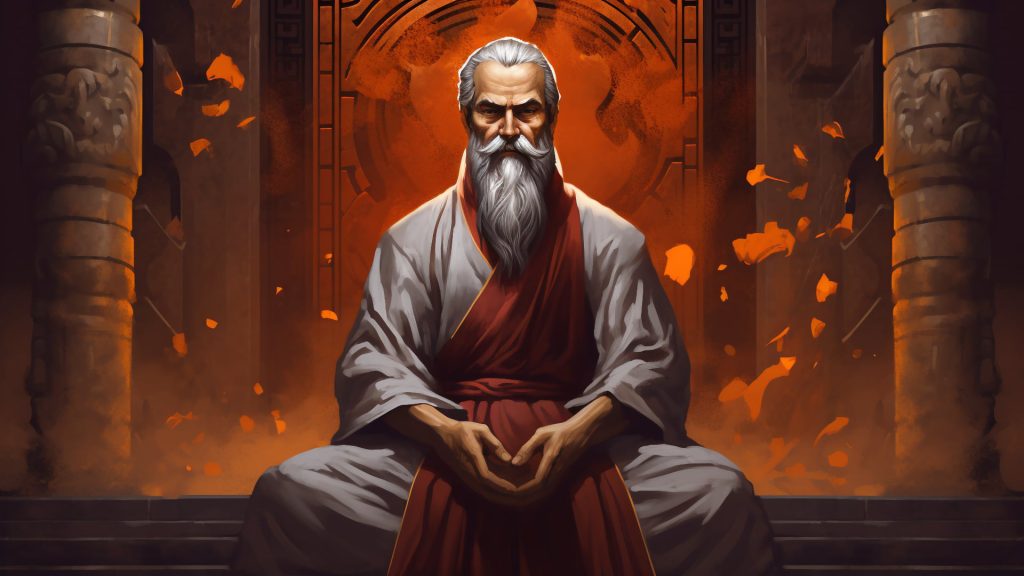
Feats are not an easy thing to choose for a Monk; the dependency on both Dex and Wis leaves you with little free ASIs to pick up feats with. In general, if you want to grab a feat on a Monk, it’s best to either play a Variant Human (for the feat at 1st level), use a build that doesn’t depend so heavily on both stats (like an Astral Self), or just force your will upon the dice and roll really high stats (duh).
Here are some examples of strong feats for a Monk:
Defensive Duelist 4 – Short swords and daggers are available to all Monks, so this gives a nice at-will defensive option to a class that usually won’t have a great AC. Combined with a rapier wielding Kensei, can result in an AC in the mid-high 20s!
Mobile 4 – This is an excellent feat for a Monk, not just because it increases your speed further, but it also allows you to disengage for free against those you attack. This feat makes a Monk one of the best skirmishers in the game.
Elven Accuracy [Elf or Half-Elf] 4 – You can round out either Dex or Wis, and, whenever you attack at advantage, you can roll three d20s instead of just two. Very potent feat if your party can wrangle you some advantage regularly. Particularly good for Kensei and Astral Self Monks that have the opportunity to add more dice to crits.
Crusher 3 – If you’re a Str Monk or have an odd Con, this is a great choice. Being able to move someone you punch for free once a turn and improving your crits is a great deal.
Gift of the Metallic Dragon 4 – An AC increasing ability is great for all characters, but particularly for the MAD Monk, with the free casting of Cure Wounds acting as emergency healing or an HP top-up between fights.
Monk 5E Multiclassing Guide

In this section, we’ll review each class in terms of how good of a multiclass it is for a Monk, mentioning how many levels and what subclass (if any) would work best. The ratings take multiclassing prerequisites into consideration; if a multiclass will require you to have a 13 in a stat other than Dex or Wis, it will likely receive a lower score due to how thinly spread a Monk’s stats are already.
General multiclass tips for the Monk:
- The amount of Ki you have is tied to your Monk level, and as such, multiclassing can heavily impact how much you can use your Ki based abilities. For this reason, it’s typically recommended to only dip 1-3 levels on a Monk; subclasses that provide Ki-less abilities (like the Kensei’s 3rd level abilities) can multiclass a little easier, whilst Ki heavy subclasses (like the Four Elements) will have a harder time losing that Ki.
- As a general rule of thumb with most martials, if you’re going to dip more than a single level, it is best to wait until you’re a 5th level Monk– delaying Extra Attack (and your Martial Arts Die increase) can leave you struggling to keep up with damage.
- Consider why you want to multiclass. If it is to gain a mechanical benefit, then perhaps look at races and feats to see if you can achieve the same thing without slowing your Monk progression.
- If you gain a long rest based resource from your multiclass, it may be difficult at first to balance how to use it when you’re used to your Ki coming back on a short rest. Try to not let this keep you from using your ability altogether; the more you play the better you will become with pacing your resources.
Artificer 1 – Int is something you don’t want to be pumping. The Artificer itself provides a lot of bonus actions through its subclasses, which you have enough of already. Generally, something you want here can be gotten somewhere else easier/cheaper. For example, if you want to give yourself a magic weapon, a Forge Cleric dip is better for you.
Barbarian 2 – This is a tough multiclass. If you’re a Str-based Monk and you haven’t neglected your Dex and/or Wis too much, then you can make it work. The additional +2 damage from Rage mixes well with the number of attacks a Monk can make, though you’ll lose your bonus action attack/opportunity to Flurry. If you go 3 deep, then Bear Totem, Zealot, and Beast are good choices.
Bard 1 – Charisma isn’t a bad MCing stat, however, your number of Bardic Inspiration dice are tied to your Cha mod and consume your bonus action. Generally ill-advised as a multiclass unless you’re looking to be a skill monkey and are willing to go two levels deep for Jack of all Trades.
Cleric 5 – If you want to dip anything, Cleric is a great choice. You already qualify with your Wisdom and they get their domains at 1st level so you can grab some great abilities. Recommended domains include Forge (for a magic weapon), Tempest and Light (for their defensive reactions), and Twilight (for an initiative boost and Darkvision if you don’t already have it).
Druid 3 – Not bad, so why so much lower than Cleric? Quite simply because at first level there’s nothing for you but cantrips and some spells– needing to go two levels to get a subclass feature makes this a higher Ki hit. Grabbing Shillelagh can be a nice tier 1 and 2 bump for Astral Self Monks and Guidance is always useful.
Fighter 5 – Short rest resources, a fighting style, and no additional stats needed. The only bad thing about Fighter is that you’ll probably find yourself saying ‘just one more level.’ And guess what? You’ll likely not be able to fight it. Dueling, Blind Fighting, and Superior Technique are good options for your style (Archery on a ranged Kensei and Unarmed if you won’t be going to higher levels are notable, as well). For subclasses Battle Master is probably the best choice, Champion is okay and will generate a decent amount of crits from the number of attacks.
Paladin 1 – You’d really need at least two levels to get a worthwhile amount of abilities, and the Str and Cha requirements just aren’t worth it.
Ranger 2 – How good of a multiclass Ranger is really depends on your build: if you can use the TCoE optional rules and want a nature-y survival Monk then this can work well. If you want to go 3 levels deep, then Hunter, Gloomstalker, and Swarmkeeper are good options. Basically, try to stay away from gaining new bonus actions.
Rogue 5 – Expertise, Sneak Attack, and Thieves’ Tools– what’s not to love? Cunning Action isn’t as valuable to you but provides a Ki-free alternative to Step of the Wind. If you go far enough for a subclass, the best choice is Swashbuckler. You likely won’t have a good Cha to take advantage of the initiative boost, but it’ll make Sneak Attack easier to qualify for and makes the Monk an even better Skirmisher.
Sorcerer 2 – Sorcerer works pretty well for picking up a few things: spell-wise, Shield is a fantastic choice, as is Magic Missile if you’re lacking a ranged option. If you want to run a lower Wis build then Draconic Sorcerer can help with your AC, and Shadow can give you superior Darkvision if you need some help in the dark. However my suggestion would be the Divine Soul; Favored by the Gods is a very handy ability that recharges on a short rest, and access to Cleric spells gives you a better choice for your cantrips/leveled spells.
Warlock 2 – Short rest spell slots and subclass abilities at 1st level make this a great dip despite needing another stat to qualify. For invocations, Fiendish Vigor is fantastic for making you more tanky and any Shadow Monk would love Devil’s Sight. For a patron, Fiend can offer up some temp hp (though unreliably), Celestial can offer you some healing, and Great Old One can give you telepathy– which is just neat.
Wizard 1 – Int requirement and needing two levels to get something really worthwhile makes this a hard pass for the most part. The only notable exception is if you want to invest the levels to get War Magic; Arcane Deflection is a great defensive ability and won’t hinder the majority of Monks like it does a full Wizard.
Hopefully, this guide has helped you reach enlightenment regarding your next Monk character, and you’re looking forward to punching your way to saving the world. If you need help getting a game going to play your newly-built Monk, check out this article here. Good luck out there, adventurers, and if in doubt, apply your forehead to the problem at speed.

